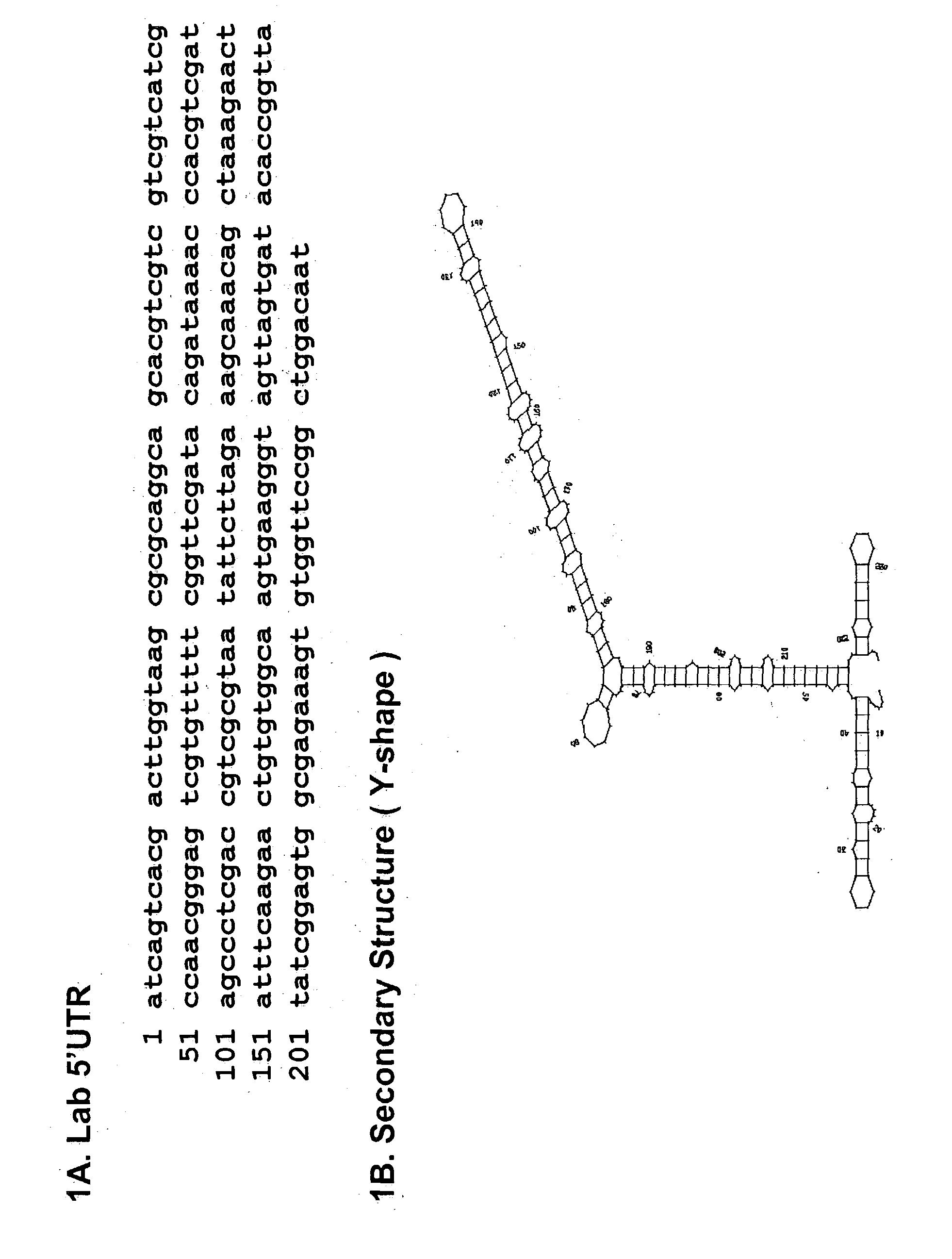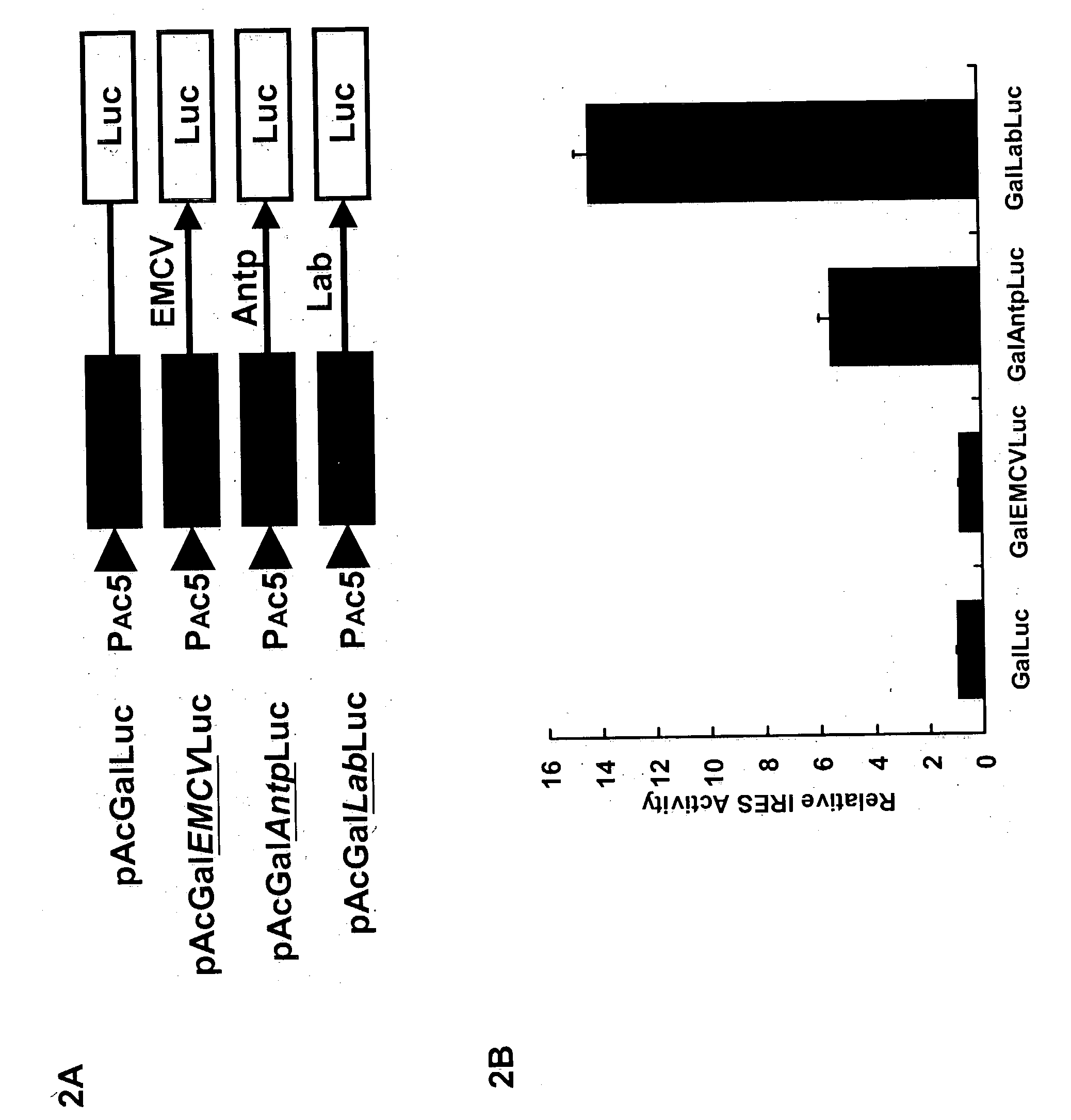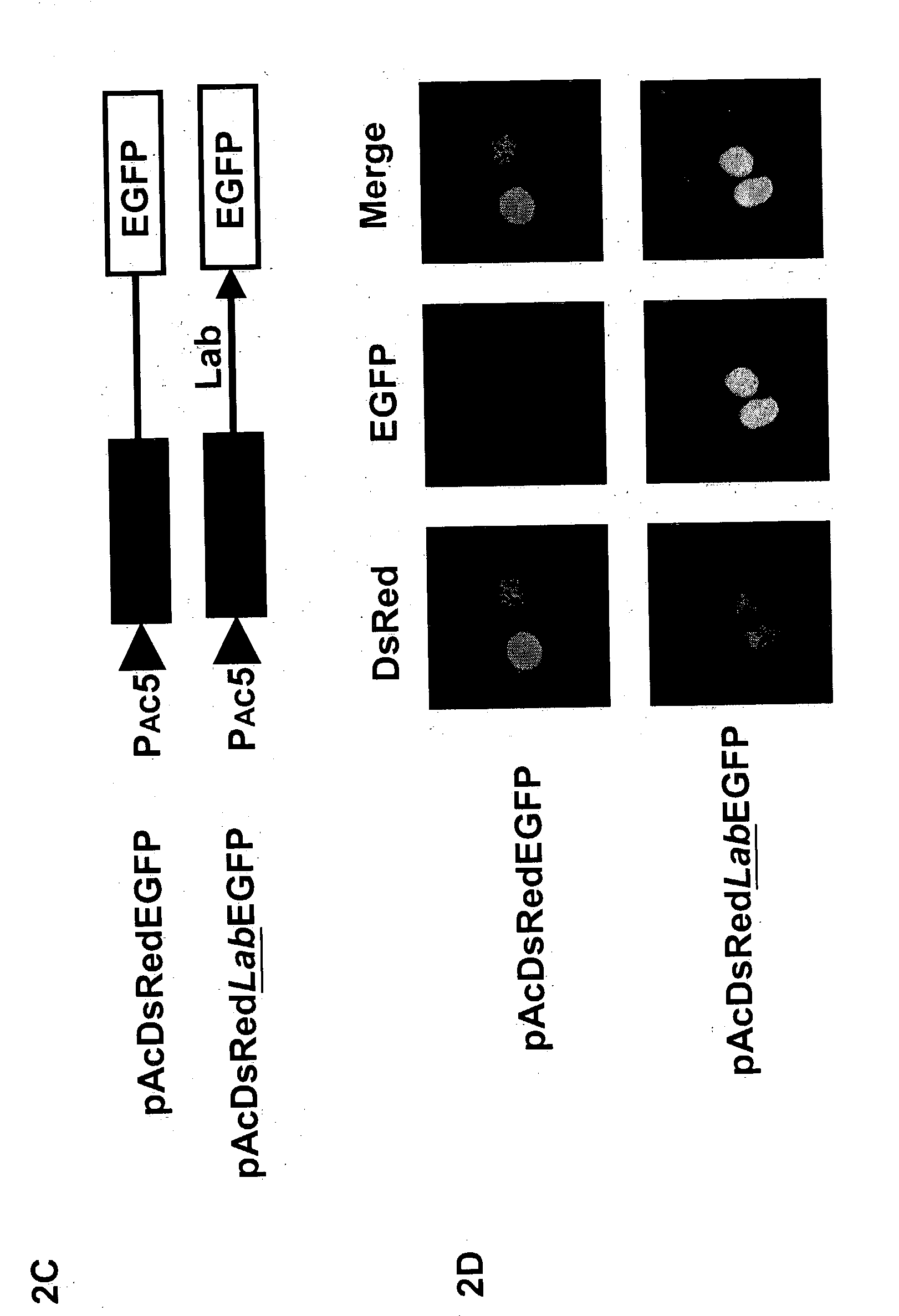Internal ribosome entry site of the labial gene for protein expression
a technology of ribosome entry and labial gene, which is applied in the field of internal ribosome entry site of the labial gene for protein expression, can solve the problems of uncoupled expression of various proteins, and achieve the effect of constant ratio, efficient translation, and efficient translation
- Summary
- Abstract
- Description
- Claims
- Application Information
AI Technical Summary
Benefits of technology
Problems solved by technology
Method used
Image
Examples
example 2
Structure of the 5' UTR of the lab mRNA
[0069] The 5' UTR of the lab mRNA contains 239 nucleotides (FIG. 1A). The secondary structure of the 5' UTR was deduced using Zuker's RNA folding program (Zucker, M. (1989) Methods Enzymol. 108:262-288). FIG. 1B shows the predicted secondary structure, a Y-type stem-loop structure comprising three highly stable stemloop domains: domain I (nucleotides 1-44), domain II (nucleotides 45-215), and domain III (nucleotide 216-239).
example 3
The lab 5' UTR Exhibits IRES Activity
[0070] A bicistronic expression system having two reporter genes, .beta.-galactosidase (in the first cistron) and luciferase (in the second cistron), was used to measure IRES activity. Four bicistronic nucleic acid vectors were constructed (FIG. 2A). In pAcGaILuc, the .beta.-galactosidase and luciferase genes were placed under the control of the actin 5C distal promoter for mRNA synthesis. No promoter or IRES sequences are inserted between the .beta.-galactosidase and luciferase genes in pAcGaILuc. Therefore, it would be expected that the .beta.-galactosidase gene would be expressed by the capdependent translation mechanism, whereas the luciferase gene may be expressed at low levels or may not be expressed at all. pAcGaIlabLuc is similar to pAcGaILuc, except that the lab 5' UTR was inserted between the two cistrons. Thus, it would be expected that the .beta.-galactosidase would be expressed by the cap-dependent translation mechanism, and that the...
example 4
The lab IRES Exhibits the Strongest Activity when Compared with other Known and Unknown IRESs in Drosophila Cells
[0077] The IRES activity of the lab gene was compared in Drosophila S2 cells with some known and unknown IRES candidates, including the 5' UTRs of the Antp, Ubx, and Notch (N) genes. Using the pAcGaILuc control vector described above in Example 3, each of the candidates were inserted between the .beta.-galactosidase and luciferase cistrons to create pAcGaIAntpLuc, pAcGaIUbxLuc, pAcGaINLuc, and pAcGaIlabLuc. Each of the bicistronic nucleic acid vectors were transfected into Drosophila S2 cells according to Example 1 and IRES activity was measured according to Example 3. FIG. 3 shows that the lab IRES expressed the strongest luciferase activity, and therefore has the strongest IRES activity in Drosophila S2 cells.
PUM
| Property | Measurement | Unit |
|---|---|---|
| total volume | aaaaa | aaaaa |
| total volume | aaaaa | aaaaa |
| concentrations | aaaaa | aaaaa |
Abstract
Description
Claims
Application Information
 Login to View More
Login to View More - R&D
- Intellectual Property
- Life Sciences
- Materials
- Tech Scout
- Unparalleled Data Quality
- Higher Quality Content
- 60% Fewer Hallucinations
Browse by: Latest US Patents, China's latest patents, Technical Efficacy Thesaurus, Application Domain, Technology Topic, Popular Technical Reports.
© 2025 PatSnap. All rights reserved.Legal|Privacy policy|Modern Slavery Act Transparency Statement|Sitemap|About US| Contact US: help@patsnap.com



